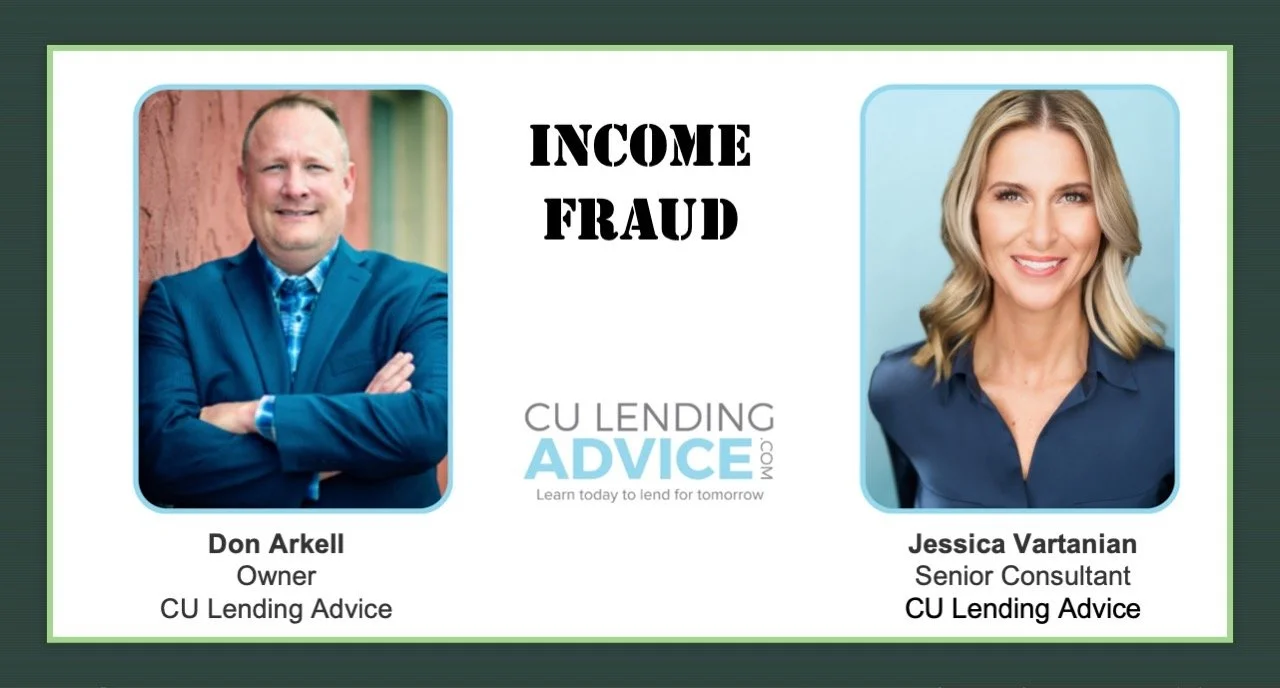Income Fraud – And What You Can Do About It
“We’re seeing an uptick in income fraud like we’ve never seen before”, says Don Arkell, the owner of CU Lending Advice and a veteran credit union executive who now helps credit unions with best practices. “Recently, we were onsite at a credit union that had experienced a $50,000 loss from fraudulent income verification. Fraud is a constant battle in our business, and it has only increased with the adoption of remote delivery of loans and advances in online services.”
The credit union business has also experienced a lot of turnover in recent years of frontline staff and many of these newer employees are inexperienced in identifying common schemes, let alone the newer tactics used by fraudsters today.
In this webinar, Don notes that income fraud is a major concern to credit unions, and it’s happening across the country. Webinar attendees reported income fraud between $25,000 to $1.2 million just over the last year.
The increase in income fraud is due to a number of factors, including:
Employee turnover on the front lines – “evacuating experience”
Lack of risk-based stipulations – e.g., waiving stipulations if the FICO is more than 700
The “digital push” from credit unions and the market
Inconsistent income verification calculations – e.g., incorrect or fraudulent income calculations driving risk metrics like PTI, DTI, and employment length
With the availability of easy on-line tools to create documentation, Don shared the scary prospect of searching YouTube for “Personal Loan No Documentation Required”. The bottom line is that the requirements to get loans is now public knowledge. Don added, “It will cause you some physical pain” to see the types of tools available to create fake documentation.
Don’s typically councils credit unions to “reduce friction” in the loan process. However, he noted that there are “appropriate times to add friction to the loan process.” Doing this right will help both the applicant and the credit union.
There are a number of strategies on how credit unions can weed out the fraud. The good news? There are now new technological solutions out there solve the problem. One way is to use “Permissioned Data”. But, there is an overwhelming amount of data out there, so the challenge is to identify the right data source and use this data to make decisions. Credit unions don’t have the resources to build custom solutions using API’s to use this data saying “this is not who we are” with respect to building out solutions in-house.
Don shared the latest approaches in solving income fraud, highlighting companies such Equifax, Point Predictive and Conductiv (which provides access to Permissioned Data).
What is Conductiv? “It is an aggregator of aggregators. It allows members to verify income on their own, and it does more than that. If it just verified income, it would be worth it even if this all that it did. It allows all the permissioned data to come from the source.”
Don wraps up with a demonstration, commenting that “Conductiv is a very efficient way of getting data from a member without it being manipulated. There is no ‘man in the middle’.”
In the end, whether any particular solution is used (or not), Don suggests that credit unions should review their processes with risk-based approaches to verifying income.
If you’re interested in viewing the replay of this webinar, fill out the form below. We promise you’ll find this an entertaining (and sometimes scary) webinar! Conductiv thanks CU Lending Advice for making this content available.





